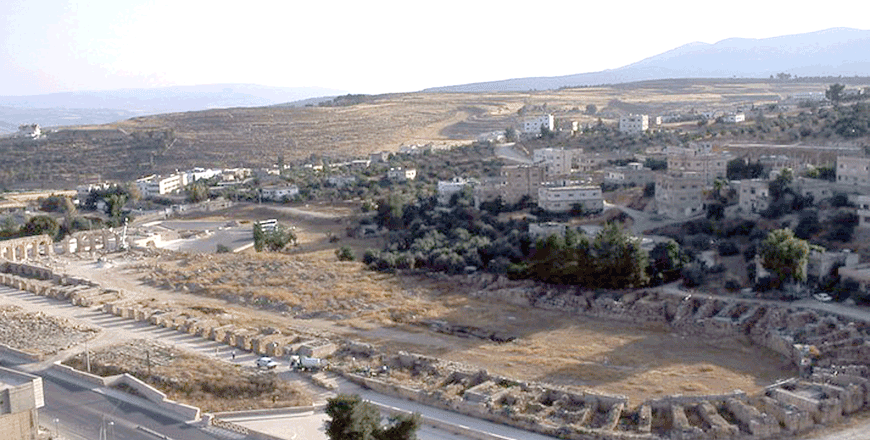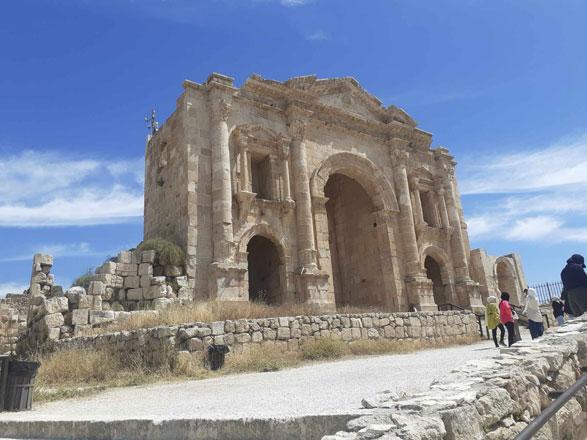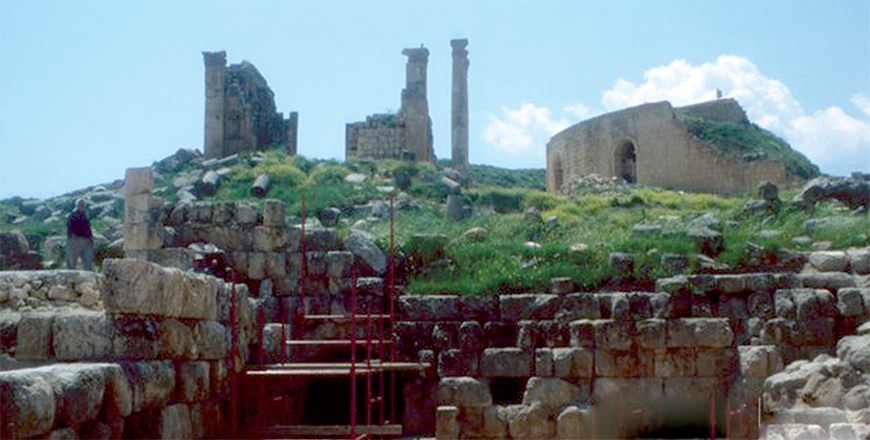You are here
Ancient craftsmanship: Focusing on pottery production in Gerasa
By Saeb Rawashdeh - Mar 12,2024 - Last updated at Mar 12,2024

A Nymphaeum in Gerasa (Photo courtesy of ACOR)
AMMAN — Ancient Gerasa (modern Jerash) was a well-known centre for pottery production: The evidence for that large scale commerce comes from the 2nd century AD, during the heydays of the Roman Empire. The foundation fills of the hippodrome, whose dirt includes misfired pottery and wasters from the 1st century BC to the early centuries of AD serves as proof for the manufacture of the pottery.
“The pottery workshops in this area must have been moved when the necropolis was closed for the construction of Hadrian’s Arch followed a little later by the hippodrome,” noted the scholar Ina Kehrberg-Ostras from The University of Sydney, adding that the date of closure of the tombs is attested because the hippodrome arena and eastern cavea covered hypogean tombs which were aligned on both sides of the prepared but unpaved Roman road (coming from Philadelphia) passing through the main gate of Hadrian’s Arch and the contemporary South Gate of the city wall.
Some of the abandoned and destroyed tombs date to the Hadrianic era, including a Decapolis Gerasa coin found in the dromos of the “Temple Tomb”. The earliest of the burials can be dated from the 1st century BC to 1st century AD
The 2nd century potters may have moved from the hippodrome to set up business nearer the Zeus Sanctuary, on the peripheral of what became the upper temple complex, possibly joining other workshops, Kehrberg-Ostras elaborated, noting that it is probable that pottery kilns continued to be in operation during construction of the upper temple complex of the Zeus Sanctuary around 160AD.
“This can be deduced from the waste products found in foundation deposits of the podium and behind the west temenos wall and one could argue that the waste was brought as fill removed from dumps of abandoned kilns [as at the hippodrome],” the professor said, adding that it is striking that the contextual stratified history of the upper temple complex shows no typological gap in discarded pottery represented in good quantity in the stratified levels.
The relative sequence of the assemblages does not show a break in production, contrary to the hippodrome where the hiatus between the pottery assemblages from foundation fills (latest pieces from early to mid 2nd AD) and the first kiln dumps in the chambers of the cavea (in the later 3rd century AD) is clearly marked.
“Architectural remains are still regarded as the main source, whilst pottery, kiln wastes and other litter tend to be ‘valued’ more for their usefulness as dating tools,” she said, adding that the completed building programmes and excavated cultural material show that Gerasa’s population was prosperous and must have relied on trade in local goods, notably ceramics, for a good part of its revenues
Masses of pottery were again produced at the hippodrome in the later 3rd century AD after chariot racing had ceased and potters had moved back to their previous district. “At least along the periphery of the upper Zeus Temple complex, production did not cease at all from the 1st century AD on,“ the archaeologist said, noting that some workshops moved to the periphery because of the building of the city wall then the upper temple complex and other buildings around it. The quantity of discarded ceramics covering the grounds within and outside south of the upper temple precinct suggests that production seems to have increased during the earlier 3rd century AD, Kehrberg- Ostras highlighted.
The shifting use of urban space between the hippodrome and the upper Zeus Temple compound is clear: “Once the hippodrome district was ‘reclaimed’ by potters they occupied the building until the end of the Byzantine period in the early 7th century AD, after which it was abandoned and only sporadically occupied by Umayyad and later squatters until the Ottoman period [when the arena was turned into vegetable gardens],” Kehrberg- Ostras underlined.
The upper Zeus Temple complex has a different occupational history, and one which on the whole lasts much longer with shifting and changing internal spatial use in each historical phase.
“The number and thickness of the cultural deposits leave no doubt that the north and west temenos and the south-western area outside the temenos were more intensively used during the Late Roman period than the south temenos itself or the cella or the eastern slope towards the lower terrace,” Kehrberg-Ostras elaborated, noting that the specific uses of space at the hippodrome was straightforward.
The pottery kilns, workshops and tanneries and their lime kilns were installed in the cavea chambers of the building in the Late Roman and Early Byzantine periods (later 3rd to early 5th century AD while the arena was kept clear of any construction or litter, whether pottery dumps, tannery waste or domestic rubbish, Kehrberg-Ostras said.
Related Articles
AMMAN — The hippodrome excavation in Jerash (ancient Gerasa) should be viewed as an exceptional case, said Australian professor Ina Kehrberg
AMMAN — In the 1st century BC and 1st century AD, Gerasa (modern Jerash) had operational quarries, which are types of open-pit mines used fo
AMMAN — When the Roman Emperor Hadrian visited Gerasa (ancient Jerash) in 129/130 AD, the Roman Empire was at its peak.














